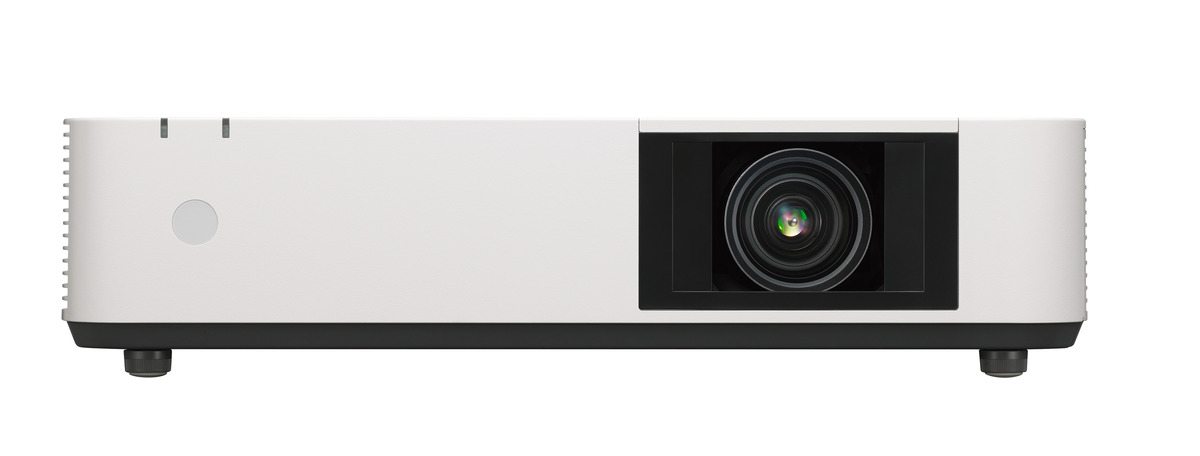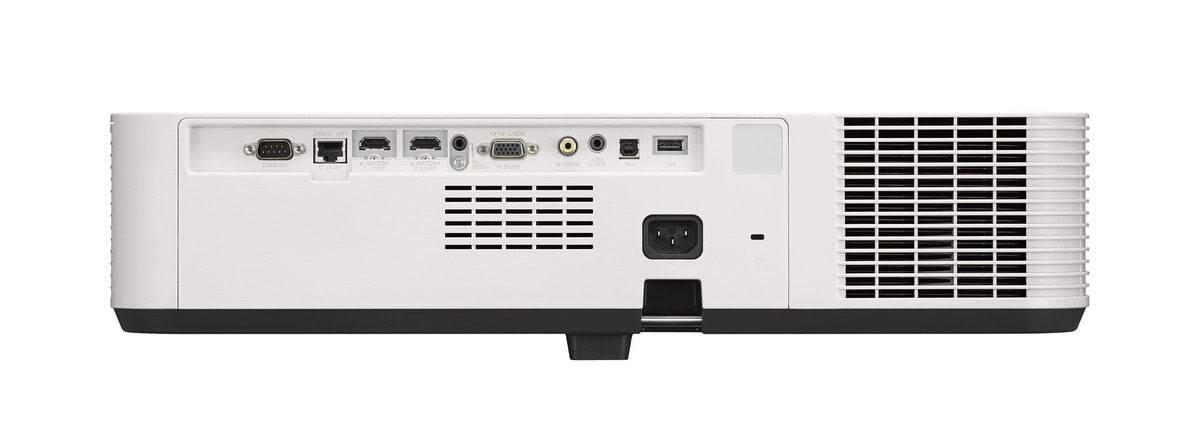On day one, lamp projectors show sharp pictures, with bright, accurate colors. But, on day 1,001, the same results are unlikely, said Sander Phipps, senior product manager of professional displays at Sony.
Lamp projectors tend to discolor and lose picture quality over time, turning different colors into shades of brown, blue or red. That’s not the case with the Z-Phosphor light source and Reality Creation technology used in Sony’s new LaserLite models.
CASE STUDY: UND REVITALIZES MEDICAL FACILITIES, UNIFIES STUDENTS
The design and function of the LaserLite models allow customers to “literally, hang it and forget about it” for up to 20,000 hours, before maintenance is required, Phipps said.
Unlike the traditional lamp projectors, the LaserLite models take advantage of laser-phosphor technology – similar to a Blu-ray player – yielding longer lasting results.
“We removed the lamp,” Phipps said. “Everything else is exactly the same.”
And since the lamp is out, so is a lot of the heat, which in turn makes these projectors quieter, and, naturally, lighter.
“The LaserLite is kind of a play on words because ‘light’ as in less weight,” he continued, “and ‘light’ as in less price.”
The Z-Phosphor technology is known to produce exceptional image quality that lasts for a long time. Since Sony also uses this technology in its home theater projectors, high image quality and noise reduction are built into the design.
However, these feature sets usually come at a premium. But, with the LaserLite models, customers can pay potentially thousands less for comparable quality.
“What’s kind of unique and makes them stand out is the fact that they’re 5,000-lumen, laser-phosphor projectors at an affordable price point,” he said.
Phipps said that so-called installation projectors, with a 5,000-lumen output, run up around $5,000 to $6,000. The LaserLite models, which also have a 5,000-lumen output and don’t get much louder than 32 dB, come in around $2,000 to $3,000.
These models fill a gap in what Phipps considers two branches of projectors. You have low-brightness, portable projectors that aren’t as expensive. And, on the opposite end, you have installation projectors with advanced capabilities, which usually come in with a high price tag.
The LaserLite models bring together the affordability of portable, LED projectors, and the lumen output and image quality of installation projectors.

There are two LaserLite models -- VPL-PHZ10 (WUXGA) and VPL-PWZ10 (WXGA) -- on the market, with image resolution being the only notable difference.
Since hitting the market, professionals in higher education are among those who have benefitted most from the price point, image quality and low-maintenance projectors, Phipps said.
“They have a budget, and they have so many rooms they have to update, put in or replace technology in, so this helps them cover more rooms with said budget,” he said.
Installing technology into dozens of classrooms, lecture halls and auditoriums can add up. Wiring things together takes time and resources, which adds to the cost.
From an install point of view, the models have an HDBaseT interface, allowing users to run signal and control over CAT5e or CAT6 cable, which reduces the overall cost of installation.

The projectors also have motorized zoom and focus lenses, with horizontal and vertical lens shifts, making it simple to fine tune adjustments. And, they have two mounting patterns.
The projectors have inputs for HDMI Digital, RGB Analog, video and audio, along with IP and serial control ports, making these projectors easy to install and versatile to use.
“They are very easy to install,” said Denny McDougald, systems sales representative at AVI Systems. “The projector has a wide range on the zoom lens so it can be installed in almost any application. The projector is also good for retrofits of existing lamp based units.”
McDougald also said the consistent lumen output and the low price point makes the decision of going to lamp-less projectors less challenging.
“There will be no more lamp and filter changes. No more special disposing of lamps with mercury in them,” he said. “Less cost of ownership and maintenance, [and more] energy savings with running laser projectors.”
For more information on LaserLite projectors, visit Sony’s website: www.sony.com/laser







